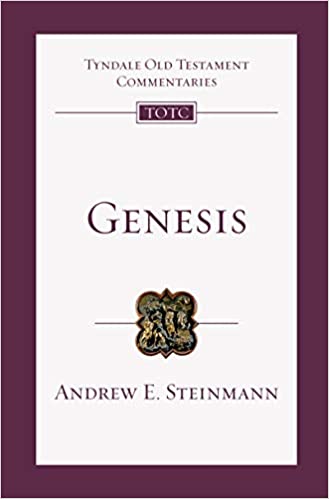A Book Review from Books At a Glance
by B. Jason Epps
Andrew E. Steinmann is a distinguished professor of theology and Hebrew at Concordia University, Chicago, focusing on Old Testament canon, biblical chronology, Hebrew and Aramaic grammar, and Old Testament books.
He begins his Genesis commentary by discussing several introductory matters. He argues for Mosaic authorship of the Pentateuch. He presents a thorough case against the JDEP theory. He covers potential interpretations for the chronologies in Genesis, which he argues should not be used for exact dating. He also seems to argue for a twenty-four-hour day cycle in Genesis. Finally, he connects Genesis to the rest of the Pentateuch, the Old Testament, and even the New Testament. In all of these discussions, Steinmann does an excellent job of presenting complex material in both a thorough and understandable manner. This simultaneous scholarly and approachable balance achieves the intended aim of the Tyndale Commentary Series, namely, to provide excellent scholarship that can be understood by the laity for the benefit of the church, a feat that is not often accomplished. After covering introductory matters, Steinmann provides a thorough outline of the book of Genesis, which helps orient readers.
In the table of contents of his commentary, Steinmann lists several topics that are important to Genesis. These topics are woven into his commentary, such as the seven days of creation, the use of Yahweh’s name in Genesis, ages in the genealogies, Noah’s flood, the literary structure of the primeval account, polygamy, chronology of Jacob’s children, pair dreams in Joseph’s life, and parallels between Joseph and Daniel. Their placement in the table of contents, however, is extremely helpful to a student or lay person dealing with these topics because they can see that these topics are mentioned in the table of contents and go right to them in their time of need instead of wondering whether this commentary covers them. This element aids in the usability of this commentary for everyone involved. This feature could be beneficial in other commentaries as well. The only thing that would make this clearer is notating that these are topics within the commentary proper in the table of contents so that the reader is not disoriented looking for articles.
In the commentary proper, he starts giving the context of large sections, for example, chapter 1 to chapter 2, and then subdivides it into smaller units, for example, five verses, then comments on the verses below. Sometimes in his analysis of verses he lists verses individually, other times he combines them into units of two verses. The content for each verse section varies from half a page at the max to three sentences at the smallest. For the most part, he avoids using Hebrew terms except for terms that are central. When he does, he transliterates them into English. He also does not include discussions of Hebrew syntax or extensive lexical discussions.
While this commentary is in general thorough, for the most part, it does not dip into technical discussions in the verse. As such, it is a good commentary for a lay person with no prior knowledge of Hebrew that wants to expand their knowledge of Genesis a little bit. However, this commentary is not for someone who is looking for the spectrum of scholastic debate that may exist over a particular verse, for example, like in the International Critical Commentary or the Word Biblical Commentary. Also, the content in some verse units is extremely brief. So, while this commentary does a fair treatment of the text, the space does not allow for it to be extremely in-depth. That being said, Steinmann does an excellent job fulfilling the role of the commentary being approachable and yet thorough. The real strength of this commentary is the introduction section, where Steinmann thoroughly covers multiple scholastic arguments within the book of Genesis, giving support and critique to both sides. The introduction in this commentary, therefore, is a great orientation to interpretive issues in the book of Genesis for someone who wants to go deeper, especially because he does a fantastic job condensing and explaining the material. The readability and thoroughness of the introduction, the non-technical commentary proper, and the flagged key topics in the table of contents all combine to make one of the most usable commentaries for lay people and beginning students.
This commentary, therefore, would be beneficial to any lay leader or church goer who desires to expose themselves to the themes and some of the key scholastic debates regarding Genesis. This commentary could also be helpful for early Bible college or seminary students wanting to read about the technical issues of Genesis in an understandable way to provide a springboard into more technical work. This is something that we need more of because so much of scholastic work resigns itself with being inaccessible except for a rare few.
B. Jason Epps
Midwestern Baptist Theological Seminary
